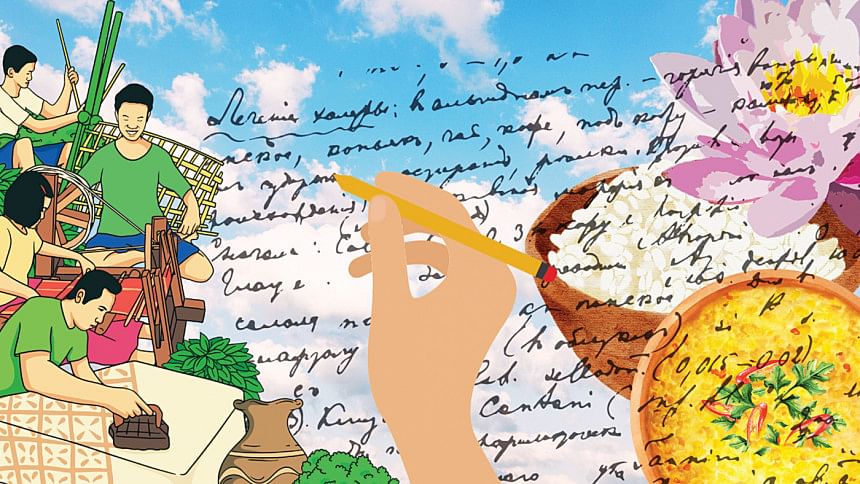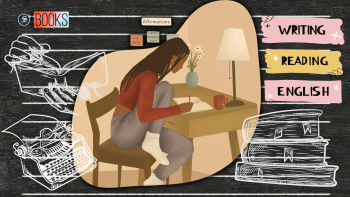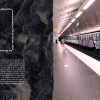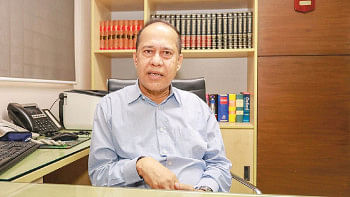What you call your own

As an Anglophone writer in Bangladesh, I've frequently faced the rather inane question of why I write in English. I've learned it the hard way that this is a trap meant to engage the writer in a pointless debate about cultural politics, but in his essay, 'On Authenticity', from the anthology Letters to a Writer of Colour (Random House, 2023), Indian writer Amitava Kumar says it best, I think, when he says:
"I would say that English has been taught to us as a language in which we had to do our homework; to write fiction or imaginative non-fiction was to find liberation in language. That feeling of freedom is what now seems to make writing most real to me." He continues to say, "Authenticity, or what you call your own or adopt as your own, is to a large extent, based on your education."
My parents put me in an English medium school. During the 80's and 90's, with the exception of Bangla classes, we were expected to only communicate in English while in school. The pros and cons of this system have subsequently been widely debated, resulting in some reforms, but what I got out of it was first language proficiency in English.
Interestingly, for the first two decades of my life, this didn't pose many problems for me. My English fluency gave me a good early start to what would become a lifelong career in journalism, and my Bangla was functional enough to navigate my life in Bangladesh.
And then I went to creative writing school in North America. Caribbean-American author Tiphanie Yanique has some wise words of advice for writers of colour attempting to do the same, in her essay 'On Character': "The creative writing workshop will destroy you if you are not prepared to stand confidently in your own clarity of thought and talent. And it is also to say that constantly having to prove yourself to people is actually no way to stand in your own clarity of thought and talent. It is emotionally exhausting, for one thing. It can also make it too treacherous for us to experience and communicate our true feelings of vulnerability—a vital and ongoing part of being a fiction writer."
By the time I signed up for my MFA, I had already been a working journalist for over a decade, with a weekly readership numbering in the thousands—I was arrogant enough to assume I was prepared to stand confidently in the clarity of my thought and talent. The next two years would disabuse me of that notion in ways I now realise are so common, I am practically a cliché.
Thrust into a predominantly white classrooms and workshops, I suddenly found myself expending energy having to defend myself against preconceived notions that my peers and professors alike seemed to have about the cultures I was writing about, or overexplaining simple things because my workshop audience was unable—or unwilling—to infer from context. There was of course the struggle of describing untranslatable emotions and scenarios to a different culture. So many translation panels at the Dhaka Lit Fest ask the question, "How do you explain 'obhiman' to a non-Bangali?" But I also began to struggle with my learned aversion to summary and exposition, with my classmates needing more context for the things that happened in my stories, and my professors repeating "show, don't tell" in their feedback. I wondered how best to incorporate all the cultural, familial and communal histories needed for my story, without resorting to blocks of exposition.
Whatever story I had in mind took a backseat to addressing repeated concerns about mundane details, until it became increasingly tempting to sandpaper over nuance, avoid structural/narrative experimentations, and make the whole text more palatable to minds unaccustomed to BIPOC literature. Things reached peak ridiculousness when a young prof asked me to change the surname of my protagonist from 'Rahman' to "something less reminiscent of ramen, because it is so distracting". I wish I was making this up.
Tahmima Anam describes the dilemma beautifully in her essay 'On Humour':
"Here's the thing no one tells you when you're a POC writer. You are there to serve a purpose, and that purpose is to tell the world about the place you're from, whether it's a small town in Bangladesh or a council flat in East London. You are the representative of your country and your people."
I had witnessed some of the local pushback against Ms Anam's debut novel, A Golden Age (John Murray, 2007) when it came out, with her "authenticity" being put on trial by the deshi literati, a phenomenon discussed in detail in Amitava Kumar's essay. One of the things that all the essayists in Letters to a Writer of Colour want to emphasise is that just as the "rules" for writing BIPOC fiction need to take into context the colours, flavours and nuances of the cultures that these Anglophone writers come from, the rules for reading these stories by non-white writers are also different. And unless the readers are exposed to a larger variety of non-white writing, they don't necessarily develop a palate for it. Even if the writing is in English, the syntax, the pacing, the very grammar of it is affected by the work of translating these cultural details into that language, and to be able to slide into those voices and worlds is an acquired skill.
"In a world and an industry dominated by whiteness, Anglophone writers of color make a conscious choice to use a language in which we don't often have the luxury of feeling safe or understood."
~ Zeyn Joukhadar
In the last decade or so, the growth of literary fests in formerly colonised countries, international events that draw in writers, publishers, translators, and editors from all around the world have done a better job in service of diversity, by shining a spotlight on the wealth of BIPOC literature, and the nominations for major literary awards are starting to reflect that. But of course, we can do much better—and it starts with our own backyard.
A casual glance at the O' and A' level literature syllabuses for 2024-2026 shows me that the recommended reading list is still dominated by old white men. If we are ever to hope to produce Bangladeshi writers in the calibre of Salman Rushdie or Arundhati Roy, we have to first create a readership with the kind of cultural exposure to a diversity of writing. It's harder to change a syllabus set by a foreign body, but it is perfectly possible to supplement it with recommended reading lists that provide a richer diet of literature. It is perfectly possible to schedule reading events and storytelling sessions inside the classroom and around in the city. Events like the Sister Library sessions at Goethe-Institut, or readings held at The Bookworm Bangladesh, and of course, Dhaka Lit Fest are positive steps in that direction. It is more than possible for anyone—parent, teacher, or casual reader—to pick up a book by an author of colour, read it, and recommend it to someone else. Letters to a Writer of Colour came out years after I had managed to survive my MFA, revive some of my confidence as a writer and develop Sehri Tales which exposes me to a lot of fresh experimentations in craft by Bangladeshi writers writing in both English and Bangla, but reading the book felt like validation and healing. Careful, concise explanations on issues of storytelling, character growth, translation, and editing by experienced writers, supplemented by a rich variety of recommended reading texts make the collection a must-have for Anglophile writers beginning their journey.
Sabrina Fatma Ahmad is a writer, journalist, and the founder of Sehri Tales.

 For all latest news, follow The Daily Star's Google News channel.
For all latest news, follow The Daily Star's Google News channel. 










Comments